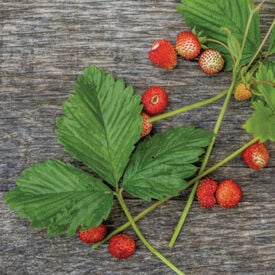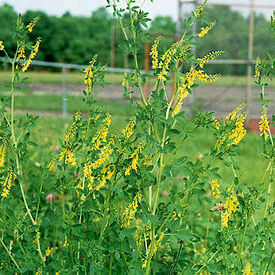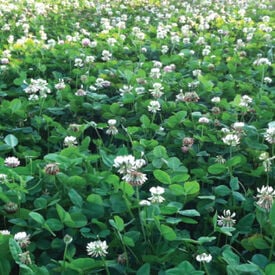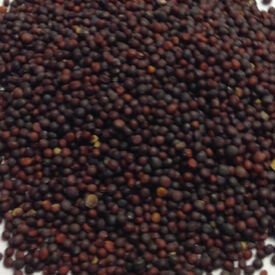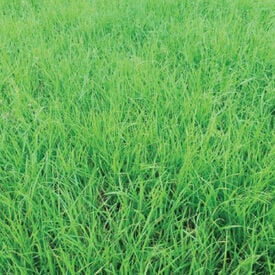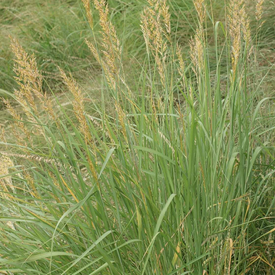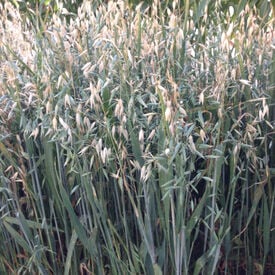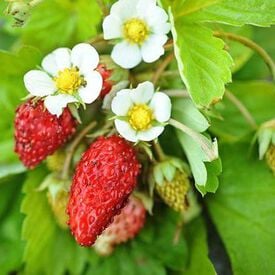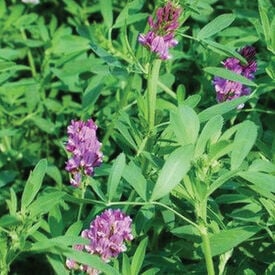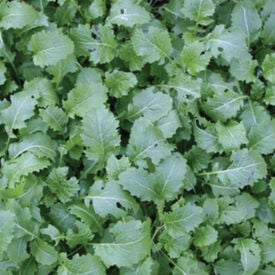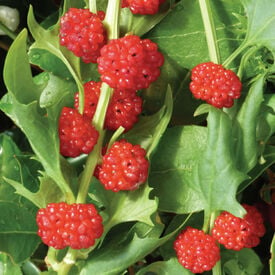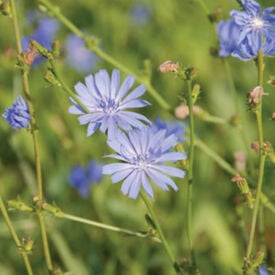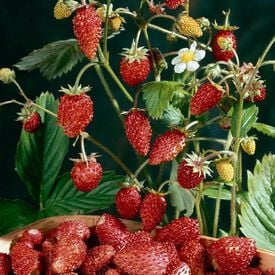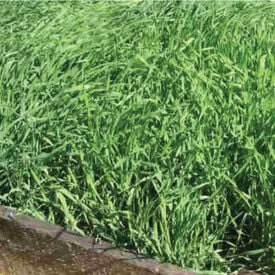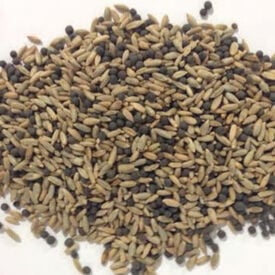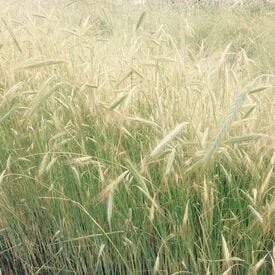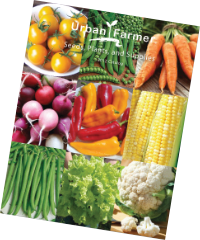Fragaria vesca, commonly known as Woodland Strawberries, are one of the oldest strawberry species cultivated and enjoyed in Europe, dating back to ancient Roman times. These petite berries are prized for their intensely sweet, aromatic flavor that far surpasses most modern commercial strawberries, with a soft texture and rich perfume-like scent. They are naturally small—often no larger than a fingernail—and grow on compact plants that produce delicate white flowers followed by bright red berries. Woodland strawberries thrive in forests, meadows, and shaded garden edges, spreading by runners and forming attractive low-growing mats, making them both ornamental and delicious.
Yes, these mouth watering fruits are real! White Alpines are white, ornately speckled with red seeds. The unique pineapple flavor and aroma more than make up for the small, bite-size fruits. Easily could be a kid's favorite mini-berry to pick and snack. Once you try one of these mouth watering fruits you will have them in your garden for years to come!
The Sweet Clover is a legume that is exceptional for not only attracting honey bees to the garden, but also creating green manure! This clover can grow nearly anywhere under most conditions. The Sweet Clover is our favorite clover because it is more versatile than other clovers at nitrogen fixating, erosion control and attracting beneficial insects. This variety is slow to establish the first year but comes on fast the following year and can produce up to 170 lb. of nitrogen per acre. The Sweet Clover comes OMRI Pre-inoculated. Uses: Bees & Beneficial Insects, Chicken Forage, Compaction Control, Deer Attractant, Erosion Control, Forage, Green Manure, Nitrogen Fixation, No Till, Weed Suppression
The Ladino Clover is the most popular white clover in the USA as it is two to four times as large as the common white clover! This clover has a high nutritive value and is palatability, making it a popular choice in pasture mixtures. It is not deep rooted, and will not tolerate much drought. Ryegrass and orchardgrass work well with ladino clover in mixtures. Broadcast at 25 lbs. per acre. Seed comes inoculated. Uses: Bees & Beneficial Insects, Chicken Forage, Compaction Control, Deer Attractant, Erosion Control, Forage, Green Manure, Nitrogen Fixation, No Till, Weed Suppression
The Barkant Forage Turnip is an improved, early maturing, diploid turnip variety with a large purple tankard shaped bulb. Turnips have a high leaf to stem ratio and and provide very high concentrations of protein, sugar content and leaf yields. This turnip is ideally suited for grazing and it is common to obtain 4-6 tons of dry matter per acre of this high-energy feed. Uses: Chicken forage, deer attractant, forage
The Annual Ryegrass is a very fast growing grass that makes for a great cover crop as its fibrous roots prevent soil erosion and build organic matter! Plant this grass early fall to late fall, or early to mid-spring and can germinate in cool weather. The Annual Ryegrass established protective cover quickly and over seeds well at higher rates. This grass can scavenge as much as 200 pounds of nitrogen per acre. When used as a spring cover crop, this Annual Ryegrass should be killed before reaching seed formation stage. Ryegrass (Lolium sp.) Uses: Erosion Control, Green Manure, Nitrogen Scavenger, No Till, Organic Matter (Biomass), Weed Suppression
The Indiangrass is a warm-season bunchgrass that is native to central and eastern North America and provides cover and food for wildlife. This grass can reach up to seven feet tall and is a common species of the Tallgrass Prairie. The beautiful, plume-like seed heads are very ornamental making them excellent for prairie and conservation mixtures.
The Mammoth Red Clover is a large, fast growing clover that is an ideal grazing crop and can be sowed in spring, summer or fall! Mammoth Red is a popular biennial clover used for Nitrogen addition and hay crops. This red clover may be the best choice for frost seeding; it is extremely cold hardy and does well in most soils and growing conditions. The Mammoth Red Clover will fix up to 70-110 lbs. nitrogen per acre. This variety's long tap roots loosen soils and mine phosphorus and other nutrients from deep in the soil. Uses: Bees & Beneficial Insects, Chicken Forage, Compaction Control, Deer Attractant, Erosion Control, Forage, Green Manure, Nitrogen Fixation, No Till, Weed Suppression
The Jerry Oats is a grain that is a quick growing green manure that will kill off any winter weeds and will hold soil with a mat of vegetation! This high yielding oat can produce over 100 bushels per acre. This grain variety is great for garlic beds and other vegetables. The oats stay green into November and form a mulched bed for spring planting. The Jerry Oats are also great for underseeding with a legume. Uses: Erosion prevention, Green Manure, Nitrogen Scavenger, No Till, Organic Matter, Weed Suppresion
Alexandria is a delicious alpine strawberry that produces delicious fruit. Deep scarlet and fragrant aromatics, these strawberries are the size of wild berries. Alexandria is an everbearing strawberry that can produce the first year if planted early. These day-neutral plants stay compact and produce few runners. Excellent for pots and window boxes.
The Common Alfalfa is a somewhat winter hardy perennial legume, but it grows more quickly than other regular alfalfa varieties. As an annual green manure, this cool-season "Summer" alfalfa can produce up to 10 tons of organic matter per acre. Its long taproots break up compacted soil and bring up subsurface minerals. High nitrogen fixation and great bee forage. Alfalfa is basically good at everything, as it great for nitrogen fixation and bee forage! Just look at all it's uses below! Alfalfa (Medicago sativa L.): Cool season, broadleaf, Perennial, Legume (N-fixation), Upright plant growth, Crude protein: hay or silage 14-22% Uses: Bees & Beneficial Insects, Chicken Forage, Compaction Control, Deer Attractant, Erosion Control, Forage, Green Manure, Nitrogen Fixation, Nitrogen Scavenger, No Till, Organic Matter (Biomass), Weed Suppression
Dwarf Essex Rape (Brassica napus) is a fast-growing, cold-hardy forage crop commonly used for livestock grazing, wildlife food plots, and soil improvement. This leafy brassica produces high-protein, highly digestible forage that remains palatable even in colder temperatures, making it an excellent choice for fall and winter grazing. It is drought-resistant and can thrive in various soil types, providing a nutritious food source for deer, cattle, and other grazing animals. Additionally, its deep root system helps improve soil structure and reduce erosion. Due to its rapid regrowth, Dwarf Essex Rape is a valuable option for sustainable pasture management.
Strawberry Spinach is a delicious fruit that is almost entirely edible. A beautiful plant with showy leaves and berries. It's triangular toothed leaves and tender shoots are great for salads. Shiny red mulberry-like fruits are edible and can be added to salads. Grown in Europe for centuries.
Chicory has a long taproot that penetrates subsoils which makes it drought tolerant and allows it to make minerals more available to livestock. Rich in potassium, sulfur, calcium, zinc, sodium, manganese and iron. When managed properly, Chicory produces leafy growth which is higher in nutritive and mineral content than alfalfa and other cool season grasses. Used mainly in mixes with other pasture or cover crop seeds. Chicory (Cichorium intybus L.) - Warm season, broadleaf - Perennial - Upright and spreading growth habit - Protein levels: 10-32% - Forms arbuscular mycorrhizal associations Uses: - Bees & Beneficial Insects - Chicken Forage - Deer Attractant - Forage
'Mignonette' is the tastiest red alpine variety in our opinion. It has moderate production of 1" long conical shaped fruit has an aroma and taste unlike anything you've ever experienced. Not as hardy as some of the other selections so mulch well for winter in colder zones.
The Elbon Rye is a grain that is the best choice for fast, cool-season germination that prevents erosion and builds organic matter in the soil! Plant this variety early to late fall; in mild climates fall through early spring. This grain captures soil nutrients in the fall to release in spring when worked into the soil. The Elbon Rye can reach up to 5 feet! Cereal Rye (Secale cereale L.): Cool season, grass, Annual or perennial, Upright plant growth, Crude protein: straw 4%, grain 14%, C:N ratio: 40-48, Self pollinator (wind) Uses: Erosion Control, Green Manure, Nitrogen Scavenger, No Till, Organic Matter (Biomass), Weed suppression
Great way to fix nitrogen and add organic matter to the soil! A great mix of grass and legume cover crops. Hairy Vetch works well for nitrogen fixation while Rye adds organic matter and protects the less hardy vetch from winter damage. If planted in fall it comes back early spring with heavy growth. Cut right after it flowers and spring and till into soil. (75% Winter Rye / 25% Hairy Vetch) Seed Coverage: - 5 lbs covers 2,000-4,000 sqaure feet - 100 lbs covers 1-2 acres Uses: Deer Attractant, Green Manure, Nitrogen Fixation, No Till, Organic Matter (Biomass), Weed Suppression
The Winter Rye is a tall grain cover crop that can reach up to be 5 feet tall and prevents erosion and builds organic matter in the soil. This grain can be planted early to late fall and in mild climates, fall through early spring. This grain is the best choice for fast, cool-season germination. The Winter Rye captures soil nutrients in the fall to release in spring when worked into the soil. Uses: Erosion Control, Green Manure, Nitrogen Scavenger, No Till, Organic Matter (Biomass), Weed suppression
